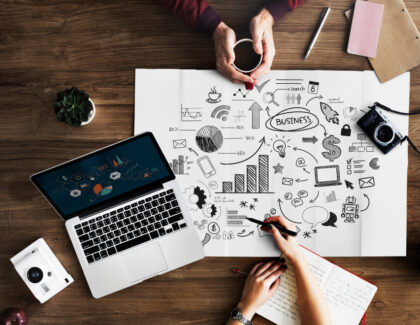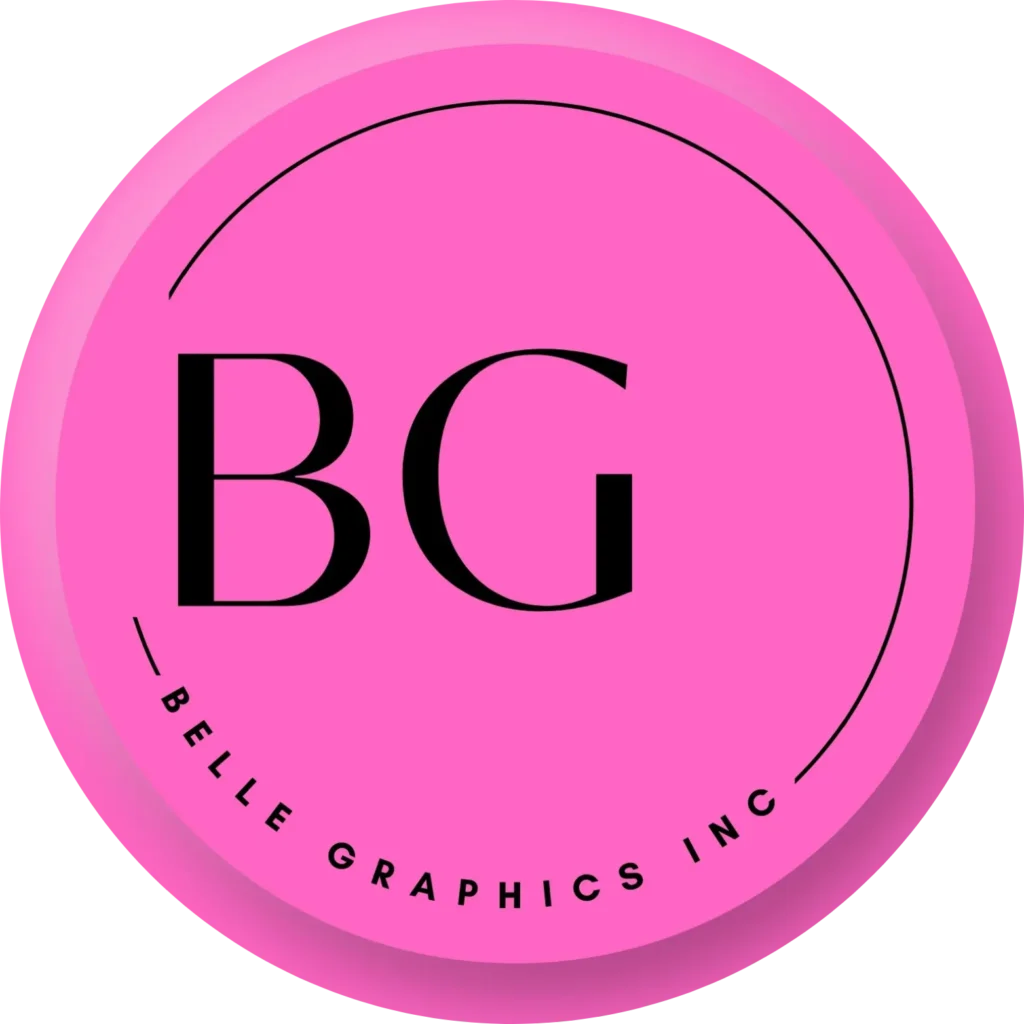The Art and Science of Website Designing

5 Productivity Tools Every Graphic Designer Should Use #2 Home Single Blog Introduction to Website Designing Website designing is more than just creating a visually appealing interface. It involves a blend of creativity, technical expertise, and strategic thinking to craft an online presence that engages users and achieves business goals. In today’s digital age, where first impressions can make or break a brand, a well-designed website is crucial for success. Understanding User Experience (UX) Design What is UX Design? User Experience (UX) design focuses on enhancing user satisfaction by improving the usability, accessibility, and pleasure provided in the interaction between the user and the website. It encompasses various elements such as information architecture, interaction design, and visual design. Importance of UX in Website Design A seamless UX is paramount in website designing as it directly impacts how users perceive and interact with a site. Factors such as intuitive navigation, fast loading times, and responsive design contribute significantly to a positive user experience. Key Elements of Effective Website Design 1. Responsive Design Responsive design ensures that a website adapts seamlessly to various devices and screen sizes, providing an optimal viewing experience. This approach is crucial in today’s mobile-first era where a large portion of internet users access websites via smartphones and tablets. 2. Visual Hierarchy Visual hierarchy involves arranging and prioritizing elements on a webpage to guide users’ attention and improve readability. Techniques such as using contrasting colors, varying font sizes, and strategic placement of call-to-action buttons can enhance the effectiveness of visual hierarchy. 3. Typography Typography plays a significant role in website design, influencing readability, user experience, and brand perception. Choosing appropriate fonts, font sizes, line spacing, and typography hierarchy contributes to the overall aesthetic appeal and readability of the content. 4. Color Theory Color theory in website designing involves selecting colors that not only align with the brand’s identity but also evoke the desired emotions and actions from users. Understanding the psychology of colors can help designers create visually appealing and impactful websites. Technical Aspects of Website Designing 1. HTML and CSS HTML (Hypertext Markup Language) and CSS (Cascading Style Sheets) are fundamental languages used in web development. HTML defines the structure of web pages, while CSS controls the presentation and styling, including layout, colors, and fonts. 2. Accessibility Web accessibility ensures that websites are usable by people of all abilities, including those with disabilities. Design considerations such as using alt text for images, providing keyboard navigation, and adhering to accessibility standards (e.g., WCAG) are essential for creating inclusive websites. 3. Performance Optimization Optimizing website performance involves reducing page load times, optimizing images and videos, minifying code, and leveraging caching techniques. A fast-loading website not only enhances user experience but also improves search engine rankings. Trends and Innovations in Website Designing 1. Minimalism and Flat Design Minimalism and flat design focus on simplicity, clean aesthetics, and a minimalist approach to user interface design. These trends prioritize usability and clarity while reducing visual clutter. 2. Dark Mode Dark mode design has gained popularity for its sleek appearance and reduced eye strain in low-light environments. Implementing dark mode involves carefully selecting colors and ensuring readability and accessibility in both light and dark themes. 3. Motion Graphics and Micro-Interactions Motion graphics and micro-interactions add dynamism and interactivity to websites, engaging users and providing visual feedback. These elements can enhance user experience and create memorable interactions. Best Practices in Website Designing 1. Conduct User Research Understanding the target audience through user research helps in designing websites that meet their needs and preferences. Techniques such as user surveys, interviews, and usability testing provide valuable insights into user behavior and expectations. 2. Implement SEO Principles Search Engine Optimization (SEO) principles should be integrated into website design to improve visibility and organic search rankings. Optimizing metadata, using descriptive URLs, and creating valuable content contribute to SEO-friendly websites. 3. Test and Iterate Continuous testing and iteration are essential in website designing to identify usability issues, gather user feedback, and make iterative improvements. Techniques such as A/B testing and usability testing help in optimizing user experience and achieving business goals. Conclusion Website designing is a multifaceted discipline that combines artistic creativity with technical proficiency and user-centric principles. By focusing on elements such as user experience, responsive design, and technical optimization, designers can create compelling websites that not only attract but also retain visitors. As technology evolves and user expectations change, staying updated with trends and best practices is crucial for maintaining a competitive edge in the digital landscape. “A skilled website developer is a crucial asset in the digital landscape, adept at transforming concepts into functional, visually appealing websites that resonate with audiences. Through proficiency in languages like HTML, CSS, and JavaScript, developers ensure seamless navigation, responsive design, and optimal performance across devices. Their expertise extends to integrating backend functionalities, optimizing site speed, and implementing SEO best practices to enhance visibility and user experience. Whether crafting custom solutions or leveraging content management systems like WordPress, developers play a pivotal role in translating business objectives into online success, ensuring every website they build meets the highest standards of functionality and aesthetic appeal.” Creating a successful website requires a strategic approach, attention to detail, and a deep understanding of the target audience’s needs and behaviors. By integrating these principles into their design process, web designers can craft websites that leave a lasting impression and drive business growth in today’s competitive online environment. Recent Posts July 7, 2024 5 Productivity Tools Every Graphic Designer Should Use #2 July 4, 2024 Digital marketing and its benefits: July 4, 2024 The Impact of Graphic Design on Business Categories Unique Technologies Support Reliable
Digital marketing and its benefits:

digital marketing and its benefits: Home Single Blog What is Digital Marketing? Digital marketing refers to the promotion of products or brands using electronic devices or the internet. It includes a wide range of marketing tactics and strategies such as: Search engine optimization (SEO) Search engine marketing (SEM) Content marketing Influencer marketing Social media marketing Email marketing Display advertising Mobile marketing The goal of digital marketing is to reach potential customers, build brand awareness and loyalty, and drive sales through various digital channels and platforms. Benefits of Digital Marketing Targeted Reach: Digital marketing allows you to precisely target specific demographics, interests, and behaviors to reach the most relevant audience for your products or services. Cost-Effectiveness: Compared to traditional marketing methods, digital marketing is generally more cost-effective. Many digital channels offer affordable advertising options and the ability to track ROI. Measurability: Digital marketing provides detailed analytics and metrics that allow you to track the performance of your campaigns in real-time. This data can help you optimize your strategies for better results. Flexibility: Digital marketing campaigns can be easily adjusted and updated based on performance data. This allows for quick adaptations to changing market conditions or customer preferences. Increased Engagement: Digital channels like social media, email, and content marketing enable two-way communication and interaction with customers. This can lead to higher engagement and brand loyalty. Expanded Reach: The global nature of the internet allows digital marketing to reach a much wider audience than traditional local or regional marketing methods. Improved Conversion Rates: Effective digital marketing strategies can lead to higher conversion rates by delivering the right message to the right audience at the right time. Competitive Edge: Businesses that embrace digital marketing can gain a competitive advantage by reaching customers more effectively in the digital space. In summary, digital marketing provides a powerful, cost-effective way for businesses to reach, engage, and convert customers in the modern digital landscape. By leveraging the right mix of digital marketing tactics, businesses can achieve their marketing goals and drive growth. Recent Posts July 4, 2024 digital marketing and its benefits: July 4, 2024 The Impact of Graphic Design on Business June 30, 2024 The Anatomy of a Successful Logo Design Categories Unique Technologies Support Reliable
The Impact of Graphic Design on Business

The Impact of Graphic Design on Business Home Single Blog The Impact of Graphic Design on Business Consistent Visual Identity: Graphic design helps establish a consistent visual identity for a business across all touchpoints – logos, websites, marketing materials, etc. This builds brand recognition and trust with customers. First Impressions: Strong graphic design creates a professional, polished image that makes a great first impression on potential customers. This can influence buying decisions. Stands Out from Competition: Distinctive, creative graphic design helps a business stand out in a crowded market and differentiate itself from competitors. Improved Market Positioning: Cohesive branding and visual identity through graphic design positions a business as an authority and trustworthy option in its industry. Drives Sales and Conversions: Well-designed websites, packaging, and marketing materials can directly impact sales by making products/services more appealing and conversion-focused. Enhances User Experience: Thoughtful graphic design, especially for digital interfaces, can improve the overall user experience and make it easier for customers to engage with a business. Boosts Brand Loyalty: Consistent, memorable graphic design helps build brand recognition and loyalty, encouraging repeat business and word-of-mouth referrals. Improving Customer Trust and Loyalty Through Graphic Design Consistent Visual IdentityMaintaining a consistent visual identity across all touchpoints – logos, websites, marketing materials, etc. – helps build trust and recognition with customers. A cohesive brand image conveys professionalism and reliability.Professional ImageHigh-quality, well-designed visuals project a professional, credible image that customers are more likely to trust. This can include elements like logos, website design, packaging, and marketing collateral.Aesthetically Pleasing DesignDesigns that are visually appealing, easy to navigate, and user-friendly create a positive experience for customers. This can lead to increased engagement, satisfaction, and loyalty.Communicating Brand ValuesGraphic design can effectively communicate a brand’s personality, values, and unique selling points. When customers connect with these brand attributes, it fosters trust and loyalty.Differentiation from CompetitorsDistinctive, creative graphic design helps a brand stand out and differentiate itself from competitors. This makes the brand more memorable and trustworthy in the eyes of customers.Attention to DetailMeticulous attention to design details, from typography to layout, signals to customers that the brand cares about quality and craftsmanship. This attention to detail builds confidence.Responsive, Adaptive DesignWebsites and digital experiences that are mobile-friendly and adapt to different devices and screen sizes provide a seamless, reliable experience that customers can trust.In summary, strategic graphic design plays a crucial role in establishing trust, credibility, and loyalty with customers. By creating a cohesive, professional, and user-friendly visual identity, brands can foster long-term relationships with their target audience. In summary, strategic graphic design is essential for businesses to establish a professional image, differentiate themselves, improve marketing effectiveness, and ultimately drive commercial success. Investing in quality graphic design is crucial for any company looking to grow and thrive. Recent Posts July 4, 2024 The Impact of Graphic Design on Business June 30, 2024 The Anatomy of a Successful Logo Design June 30, 2024 7 Graphic Design Trends to Watch in 2024 Categories Unique Technologies Support Reliable
The Anatomy of a Successful Logo Design

The Anatomy of a Successful Logo Design Home Single Blog The Anatomy of a Successful Logo Design A logo is often the first thing people notice about a brand. It’s the visual shorthand that represents a company’s identity, values, and personality. But what makes a logo truly effective and memorable? Let’s explore the key elements that go into crafting a successful logo design. Simplicity is Key The most iconic logos are often the simplest. Think of the Nike swoosh or the Apple logo – both instantly recognizable yet elegantly minimalist. A simple logo is easier to remember, works well at small sizes, and can be versatile across various mediums and applications. When designing a logo, aim for clean lines, limited colors, and a single focal point. Memorability Matters A great logo should be distinctive and stand out from the competition. It should be unique enough to be instantly recognizable and associated with a specific brand. Consider incorporating a memorable symbol, using an unexpected color scheme, or playing with negative space to create a logo that sticks in people’s minds. Versatility is Essential A logo needs to work in a variety of contexts – from a website favicon to a giant billboard. A successful logo should be scalable, legible, and impactful whether it’s reproduced in full color, black and white, or even a single color. It should also translate well across digital and print mediums. There are many variations of passages of Lorem Ipsum available, but the majority have suffered alteration in some form, by injected humour, or randomised words which don’t look even slightly believable. If you are going to use a passage of Lorem Ipsum, you need to be sure there isn’t anything embarrassing hidden in the middle of text. While it’s important to stay current, a logo should have longevity. Trends come and go, but a well-designed logo will stand the test of time. Avoid gimmicky design elements or overly trendy styles that will look dated in a few years. Instead, focus on creating a logo that will still look fresh and modern a decade from now. Belle Meaning Matters The best logos have a deeper meaning or symbolism that connects to the brand’s values and personality. Consider incorporating visual metaphors, hidden meanings, or subtle nods to the company’s history or mission. Use the latest tools Best services for out clients Quick dedicated support team. A logo with meaning feels more authentic and helps build an emotional connection with the audience.Crafting a successful logo is both an art and a science. By keeping these key elements in mind – simplicity, memorability, versatility, timelessness, and meaning – you can create a logo that effectively represents your brand and leaves a lasting impression on your audience. Remember, a great logo is the foundation of a strong brand identity. Recent Posts June 30, 2024 The Anatomy of a Successful Logo Design June 30, 2024 Seo Optimization Program Schedule Opening June 30, 2024 10 Ways to Achieve your business goal Categories Unique Technologies Support Reliable Analytics
7 Graphic Design Trends to Watch in 2024

7 Graphic Design Trends to Watch in 2024 Home Single Blog 7 Graphic Design Trends to Watch in 2024 As we look ahead to the new year, the world of graphic design is poised for an exciting evolution. From bold color palettes to nostalgic aesthetics, these are the top trends that are set to dominate in 2024. 1. Maximalist Designs After years of minimalism, the pendulum is swinging back towards maximalist designs that embrace bold, vibrant colors, intricate patterns, and layered elements. This trend taps into a desire for visual excitement and self-expression. 2. 3D Illustrations Three-dimensional illustrations are making a major comeback, with designers leveraging 3D modeling software to create whimsical, tactile visuals that jump off the screen. This trend lends a sense of depth and dynamism to digital content. Nostalgia is a powerful force in design, and we’re seeing a resurgence of retro aesthetics inspired by the 70s, 80s, and 90s. Expect to see more vintage-inspired color palettes, groovy typography, and playful, analog-tinged graphics. Belle 4. Inclusive Representation Diversity and representation are becoming increasingly important in graphic design. Brands are prioritizing visuals that authentically reflect a range of ethnicities, body types, ages, and abilities, moving away from outdated stereotypes. 5. Kinetic Typography Text is taking on a new dynamism, with designers experimenting with kinetic typography that brings words and letters to life through movement, animation, and visual effects. This trend adds an extra layer of energy and engagement to digital content. 6. Earthy Color Palettes In response to our collective need for grounding and connection with nature, earthy color palettes featuring warm neutrals, rich browns, and soothing greens are gaining popularity. These natural hues evoke a sense of calm and sustainability. 7. Asymmetric Layouts Traditional grid-based layouts are giving way to more dynamic, asymmetric designs that challenge the eye and create a sense of visual interest. Designers are embracing off-center compositions, overlapping elements, and unconventional page structures. As the graphic design landscape continues to evolve, these seven trends are poised to shape the visual landscape in the year ahead. Keep an eye out for these innovative approaches to color, typography, illustration, and layout as brands strive to captivate and engage their audiences. Recent Posts June 30, 2024 The Anatomy of a Successful Logo Design June 30, 2024 7 Graphic Design Trends to Watch in 2024 June 30, 2024 10 Ways to Achieve your business goal Categories Unique Technologies Support Reliable Analytics
5 Productivity Tools Every Graphic Designer Should Use

5 Productivity Tools Every Graphic Designer Should Use Home Single Blog 5 Productivity Tools Every Graphic Designer Should Use As a graphic designer, your time is precious. Between juggling client demands, creative brainstorming, and endless design revisions, it’s easy to feel overwhelmed. But what if I told you there are tools out there that can help streamline your workflow and boost your productivity? Here are 5 must-have apps and software that every designer should have in their arsenal. 1. Figma Figma is a powerful, cloud-based design tool that allows you to create, collaborate, and prototype designs with ease. Its intuitive interface and real-time collaboration features make it a game-changer for teams working on complex projects. Plus, the robust component library and design system capabilities help maintain brand consistency. 2. Canva For designers who need to quickly create social media graphics, presentations, or marketing materials, Canva is a lifesaver. This drag-and-drop design platform offers thousands of customizable templates, stock photos, and design elements to help you produce professional-looking visuals in a fraction of the time. 3. Adobe Creative Cloud While the full Adobe Creative Cloud suite may be an investment, it’s an essential toolkit for any serious graphic designer. From Photoshop for photo editing to Illustrator for vector illustrations to InDesign for layout design, the Adobe apps offer unparalleled creative power and functionality. 4. Trello Keeping track of design projects, client feedback, and deadlines can be a logistical nightmare. That’s where Trello comes in. This intuitive project management tool allows you to visually organize your tasks, collaborate with team members, and stay on top of your workflow. 5. Unsplash Finding the perfect stock photo or illustration can be a time-consuming process. Unsplash is a free, high-quality stock image library that provides a vast collection of beautiful, curated visuals to enhance your designs. Save time and avoid the hassle of sifting through low-quality stock sites. These five productivity tools are game-changers for graphic designers looking to streamline their workflow, collaborate more effectively, and create stunning visuals faster. By incorporating them into your design process, you’ll free up more time for the creative aspects of your work and deliver exceptional results for your clients. Recent Posts June 30, 2024 The Anatomy of a Successful Logo Design June 30, 2024 7 Graphic Design Trends to Watch in 2024 June 30, 2024 5 Productivity Tools Every Graphic Designer Should Use Categories Unique Technologies Support Reliable Analytics
Mastering the Art of Negative Space in Design

Mastering the Art of Negative Space in Design Home Single Blog Mastering the Art of Negative Space in Design In the world of graphic design, the old adage “less is more” often rings true. One of the most powerful tools in a designer’s arsenal is the strategic use of negative space – the empty areas surrounding the main elements in a design. Far from being an afterthought, negative space can elevate a design from good to great. What is Negative Space? Negative space refers to the areas of a design that are left blank or unoccupied by any visual elements. It’s the empty space that surrounds the focal points, logos, text, and other key components of a design. While it may seem counterintuitive, this “empty” space plays a crucial role in creating balance, directing the viewer’s eye, and enhancing the overall aesthetic. The Power of Negative Space When used effectively, negative space can have a profound impact on a design. It can create a sense of simplicity and elegance, draw attention to the most important elements, and even reveal hidden meanings or secondary imagery. By strategically leaving areas of a design uncluttered, you allow the viewer’s eye to rest and focus on the key message or visual. Mastering Negative Space Mastering the art of negative space takes practice, but the payoff is well worth it. Start by identifying the focal points in your design – these are the elements you want to draw the viewer’s eye towards. Then, consciously leave ample breathing room around these focal points, using the negative space to create balance and visual hierarchy. Pay attention to the proportions and placement of your design elements. Experiment with asymmetrical layouts, overlapping shapes, and unconventional compositions that leverage the power of negative space. You can also use negative space to reveal hidden meanings, like the famous FedEx logo that features an arrow in the negative space between the “E” and “x”. Negative Space in Action Negative space shines in a variety of design applications, from logos and branding to print materials and website layouts. Study the work of design masters who have mastered this technique – you’ll find stunning examples in the packaging of luxury goods, the minimalist aesthetic of Apple’s marketing, and the elegant simplicity of high-end fashion brands. By embracing the power of negative space, you can elevate your designs, create a sense of sophistication, and guide the viewer’s eye exactly where you want it to go. So the next time you’re working on a project, don’t be afraid to leave some room for the empty space to work its magic. Recent Posts June 30, 2024 The Anatomy of a Successful Logo Design June 30, 2024 7 Graphic Design Trends to Watch in 2024 June 30, 2024 5 Productivity Tools Every Graphic Designer Should Use Categories Unique Technologies Support Reliable


